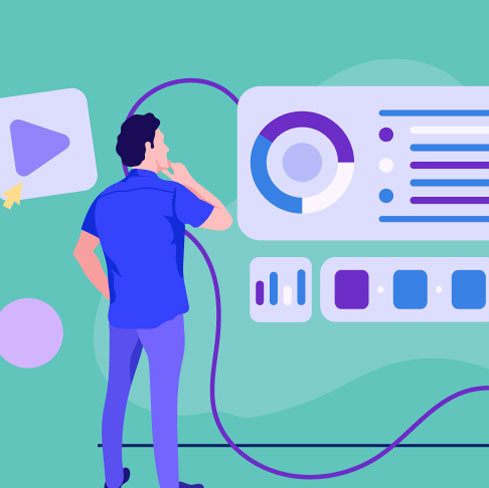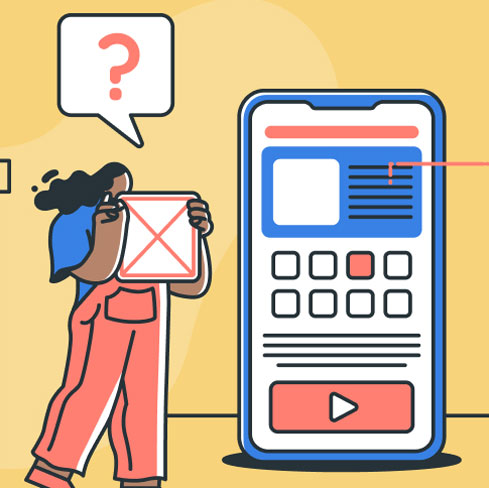UX Designers, Are You Ready For The Alternate World?
August 12, 2019 | Read Time : 3 mins
Table of Contents
Today’s world of technology is an era witnessing unprecedented growth with Artificial Intelligence, Machine Learning, Stimulated environments, changing the way we conduct perceive and communicate with the world around us.
Voice enabled devices and chatbots are no more a luxury but a regular part of our day-to-day lives. The way we search and find information online is rapidly changing owing to search engines driven by AI and Computer Vision, and everyday activities are transforming with the rapid influence of Virtual, Augmented and Mixed Reality in the workplace.
Depending on your outlook towards life, being a UX designer is either tough or immensely satisfying. The field is constantly changing. There is a vast difference in what a UX designer did in 2008 as compared to what a UX designer does in 2018. Technology has progressed rapidly in the last two decades and the UX designer has to work with more than just one visual medium.
With the proliferation of dynamic web technology, mobile devices, touch screens, smart TVs, and smart devices, the best UX designers in the world simply keep adapting. The sheer complexity of platforms and channels demands a new set of skills, practices, and research far beyond the conventional knowledge of interface design.
Today, UX designers face yet another paradigm shift. With the advent of AR and VR, companies are relying on these tools to deliver the best possible experience for their customers. UX designers will soon find themselves designing interactions for such platforms (or maybe are already!).
Get to know AR, VR and MR
Virtual Reality (VR)
Virtual Reality world is entirely simulated where you can interact in. Think of Johnny Quest, and you will immediately understand VR. It’s like playing a video game, but the main character is you yourself. This is generally experienced by devices that are wrapped around your head, eyes, and hands. This makes the virtual world around you respond to your movements and gestures.
The technology has progressed and has found its way into business conferences, and immersive movie experiences, training and education.
Augmented Reality (AR)
Augmented Reality is a cross between real life and VR. It’s the superimposition of simulated images in real life environment. The best example to understand this technology would the hugely popular Pokemon Go game. You just pointed your camera in the real world, and your screen would show virtual Pokemon characters and elements on your mobile screen.
Businesses around the world are speaking of the massive potential of AR to reach out to more customers and improve the in-app experiences.
Mixed Reality (MR)
Mixed Reality is a hybrid of the real and virtual world merged to produce an environment where both, physical and digital objects co-exist and interact in real time. Mixed reality, often called Hybrid reality, does not necessarily exist solely in the physical or virtual world, but rather mixes the two via immersive technology.
Forerunners in AR and VR Today
Amazing examples of AR in the world today are ample. Google Sky Maps is an amazing example where you point your phone at any part of the sky, and the app super imposes the specific constellation or planet on your screen. Another brilliant example is Argon4 wherein you point your camera at buildings and the screen shows you its history, trivia, and estimated value. Aside from Pokemon Go, the app stores and play stores are flooded with AR-interactive games. Globally, the AR and VR market is expected to reach $94 billion by 2023. And even in this, AR is expected to grow at a CAGR of 73.8%.
How Are These Technologies Changing UX?
AR as a technology is gaining wide acceptance because of its immersive nature. UX in augmented reality is an exciting place to be in.
Industrial 4.0
The team at Origin worked with Tasqar to design a MIXED reality solution for industry 4.0 to connect workforce with the relevant data. Workers can through AR device operate on real-time data using Smart and Connected systems through the IIOT (industrial IoT) technology. With advanced features such as REMOTE ASSISTANT, DATA VISUALIZATION and GUIDED WORK INSTRUCTIONS, the design system powers a 45% increase in efficiency, and 20% reduction in job cards. The UI and UX of the solution are versatile with Speech and Touch gestures, enabled for tough and rugged environments.
To know more, get in touch with us.
Retail
One major complaint that customers have is that they do not get to try apparel or accessories before purchase. Like in the Lenskart example above, AR can now provide that option to online retailers. Similarly, for consumer durables, customers will now have the option to see how furniture or electronic appliances will fit and look in their houses. UX designers will be responsible for making this new feature as accessible and as easy to use as possible for customers. See Takeleap’s take on improving customer in-store experiences at IKEA here.
Logistics
With the advent of RFID tags, it became much simpler for logistics personnel to keep track of shipments and parcels. AR will take this convenience further by enabling personnel to keep track of cargo in real time, and it also has the power to give complete information about supply chain and product specifications on the AR-enabled platform. UX designers will have their task cut out for them to be able to identify how best to represent all trivial and non-trivial data to users. This will greatly increase the efficiency of the organisation.
Improvising Daily Lives
Incorporating AR into everyday apps like location-based services and utility tools like calculators and scanners and measurement tools seems like the most obvious step. It can be argued that this is where UX designers would be of most use. Making AR ubiquitous and easy to use at this level would be the true litmus test of the technology. Designing a product that the elderly could use and find useful will truly ensure higher levels of collaboration and innovation.
The Future of UX
Keep your users first in mind over technology
Regardless of the hype, a balanced approach towards working with this medium is crucial. Developers and Designers need to work together along with an understanding of timelines, budgets and stakeholders involved – the major ones being the end users.






